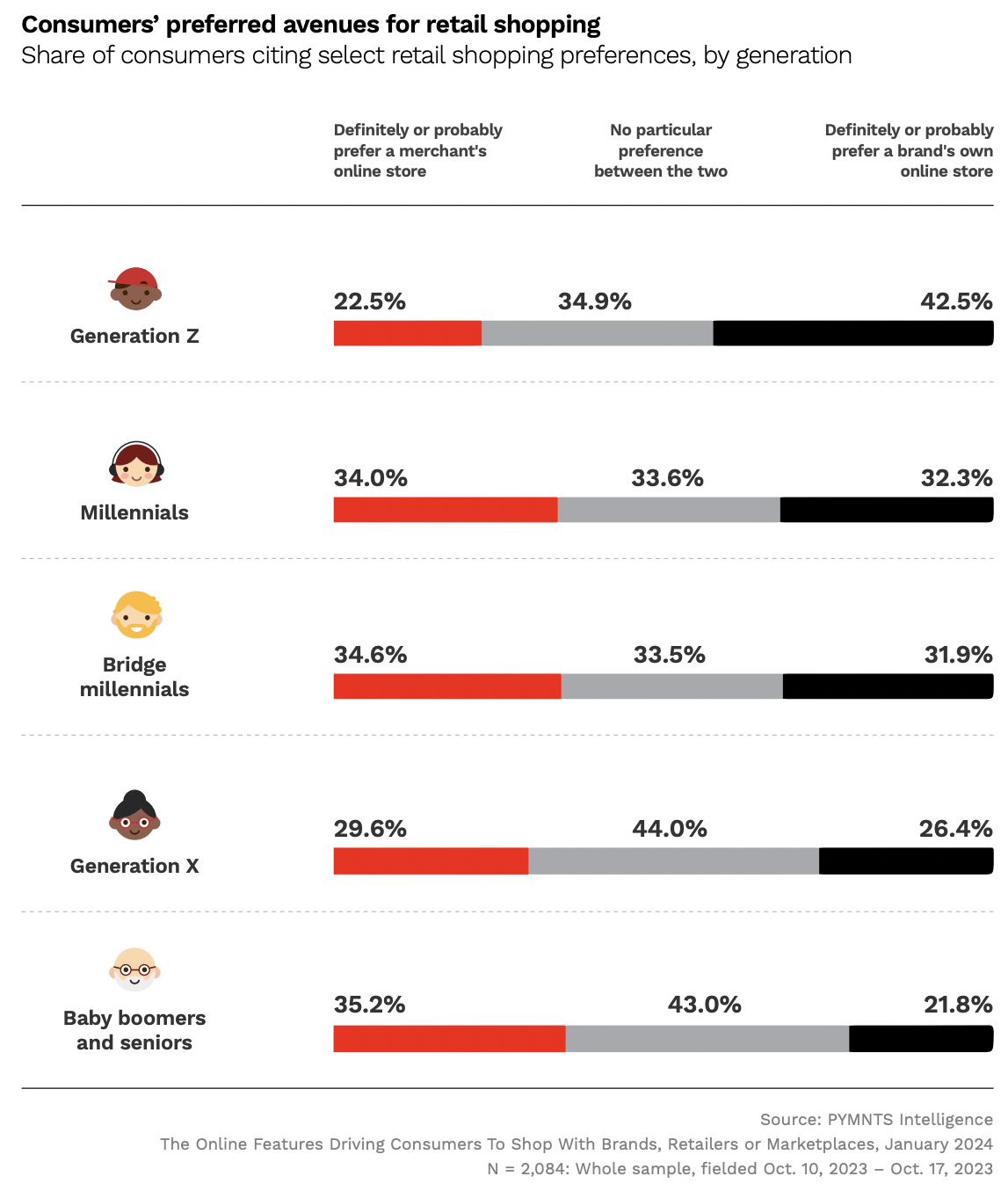
When it comes to buying directly from brands, Generation Z is ahead of the curve.

The PYMNTS Intelligence report “The Online Features Driving Consumers to Shop With Brands, Retailers or Marketplaces” drew from a survey of more than 3,500 U.S. consumers in October to understand shoppers’ choices and behaviors when they make purchases online.
The results revealed that for digital shopping, Gen Z consumers were the most likely to want to buy directly from a brand and the least likely to prefer shopping via merchants’ online stores. Specifically, 43% of Gen Z said they definitely or probably prefer a brand’s own online store —above the 28% of the population as a whole that said the same.
Conversely, 23% of these young consumers said they definitely or probably prefer a merchant’s online store, while 32% of consumers across generations said the same.
Given this opportunity, brands are tailoring their direct-to-consumer (D2C) offerings to young consumers’ preferences.
Take, for instance, Chamberlain Coffee. In an interview with PYMNTS posted in September, Liz Ahern, chief marketing officer of the coffee brand, which sells its products via its D2C shop as well as in thousands of retail locations, discussed how it is meeting the needs of Gen Z.
“With our consumer, which is the Gen Z consumer, what we’ve found is a move towards and a preference for convenience when they’re looking for coffee formats,” Ahern said. “So, for example, a single-serve pack for a Keurig or a Nespresso machine, or something that is equipment-less… we’re finding that our consumer is really gravitating towards these formats.”
It’s not just coffee brands. Saturday Skin CEO Hyobin Song explained to PYMNTS in a conversation last month how the brand not only learns from Gen Z but also applies these insights to cultivate and secure their loyalty.
“These days, most customers are reading the ingredients,” Song said. “And they’re very well educated, and they do more online research than ever.”